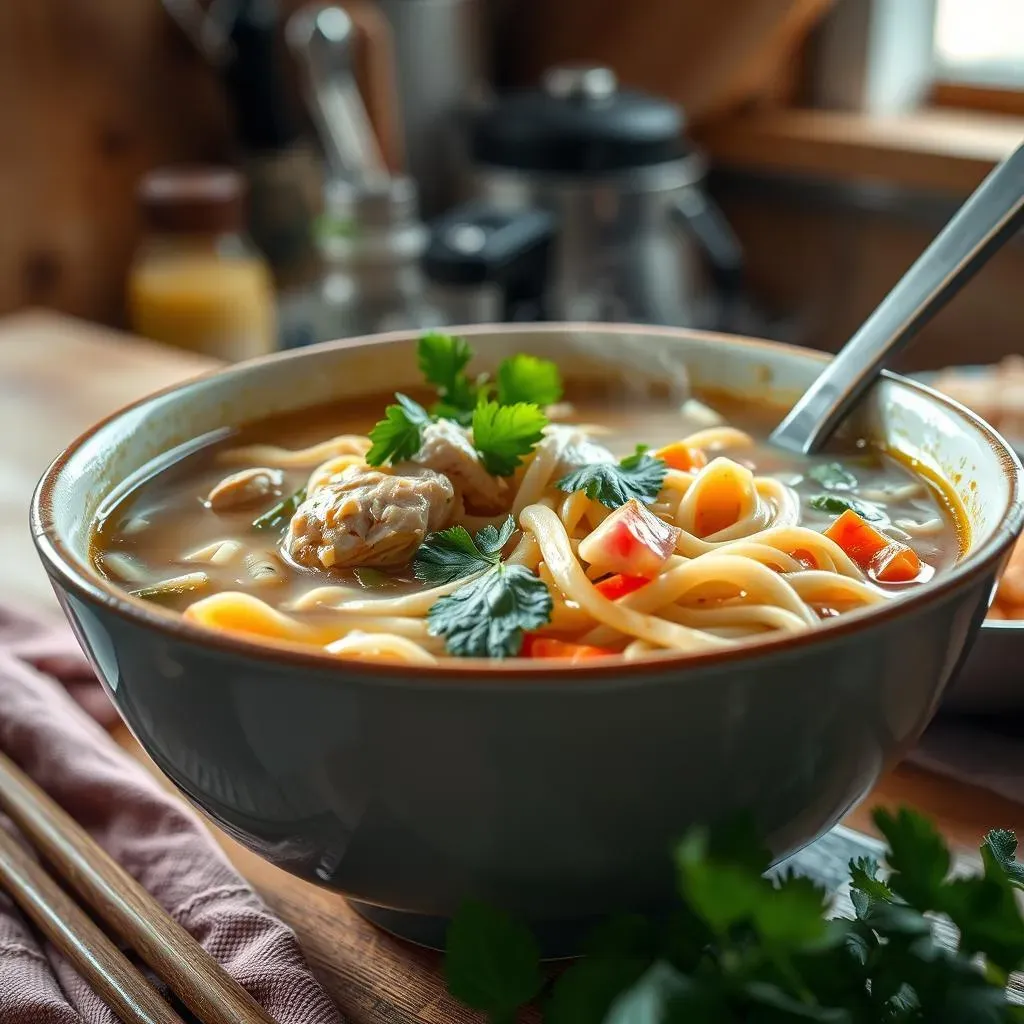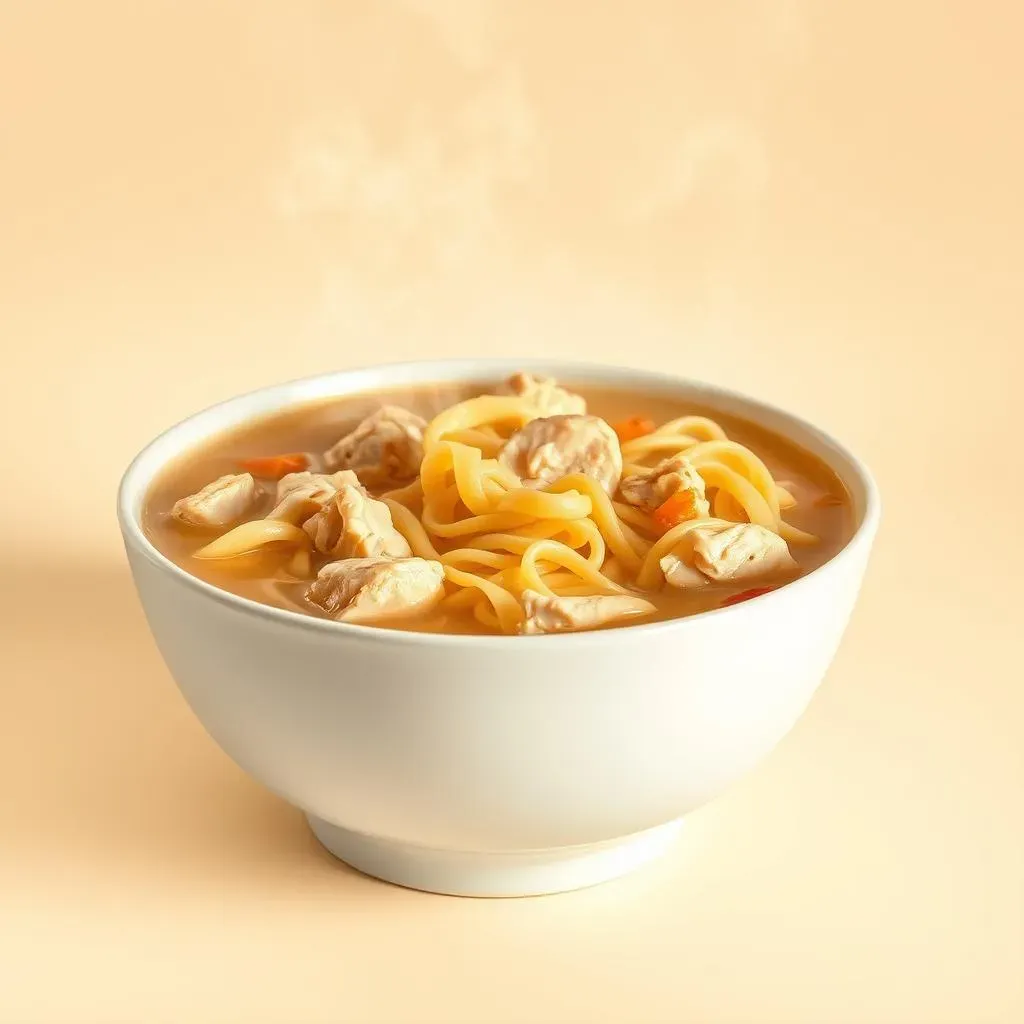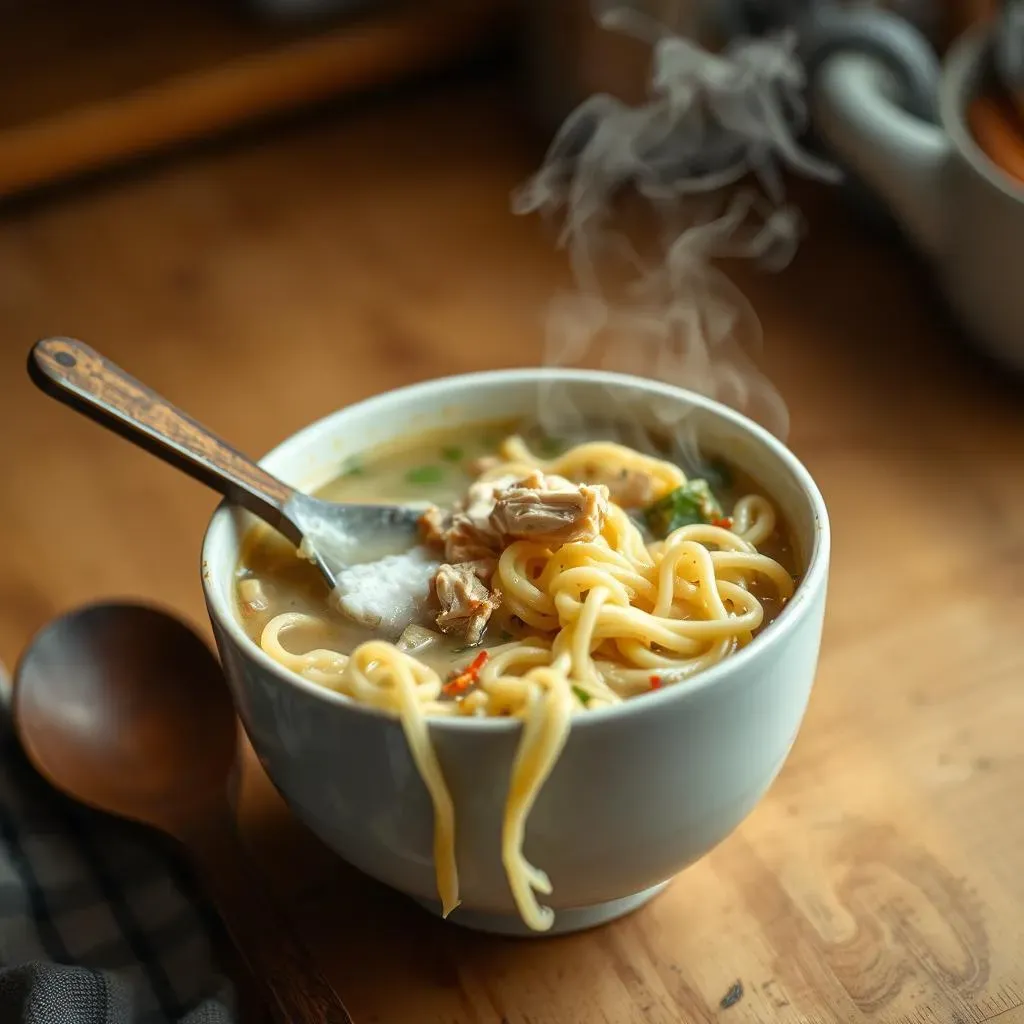Table of Contents
Picture this: a chilly evening, a comforting bowl of homemade chicken noodle soup, and the happy thought of leftovers for tomorrow. But then a question pops up: can chicken noodle soup be reheated without turning into a mushy mess? It's a question many of us have pondered, and the answer isn't always straightforward. This article will guide you through the ins and outs of reheating this classic soup. We'll tackle the common pitfalls, like soggy noodles and overcooked veggies, and share tips and tricks to ensure your reheated soup is just as delicious as the first time around. We’ll explore the best methods for reheating, whether you're using a stovetop or microwave. So, if you're ready to unlock the secrets to reheating chicken noodle soup like a pro, keep reading and let's get started!
The Great Reheating Debate: Can Chicken Noodle Soup Be Reheated?

The Great Reheating Debate: Can Chicken Noodle Soup Be Reheated?
The Core Question: Is It Safe?
Let's get right to it: yes, you absolutely can reheat chicken noodle soup. The big question isn't really about safety, assuming you've stored it correctly in the fridge within a couple of hours of cooking. The real debate revolves around maintaining the soup's original deliciousness. Nobody wants a bowl of sad, mushy noodles swimming in a bland broth, right? So, while the answer to "can chicken noodle soup be reheated" is a resounding yes, the how is where the magic (and sometimes the misery) lies.
The concern with reheating isn't about whether it will poison you, but more about the texture and taste. Overcooked noodles can turn to mush, vegetables can lose their snap, and the broth might taste a bit flat. That's why it's important to know the best reheating techniques to keep your soup as close to the original as possible. It's all about being smart about it.
The Texture Tango: Noodles and Veggies
Think of the noodles and vegetables as the divas of the soup. They're the most susceptible to textural changes during reheating. Noodles, especially, tend to soak up broth as they sit, which means they can become overly soft when reheated. And veggies? They can go from perfectly tender to mushy real quick. It's a textural tightrope walk, and we're here to help you navigate it without any kitchen catastrophes.
Ingredient | Reheating Challenge | How to Mitigate |
|---|---|---|
Noodles | Sogginess | Add noodles separately or slightly undercook them initially |
Vegetables | Mushiness | Don't overcook the first time, or add later |
Broth | Loss of flavor | Reheat gently, add extra seasoning if needed |
The Flavor Factor: Preserving the Taste
Beyond texture, there's the flavor to consider. Sometimes, reheated soup just doesn't taste the same. It can lose some of its original vibrancy. This often happens because some of the delicate flavors can break down with heat. But fear not, there are ways to keep that deliciousness intact. The key is gentle reheating and a little extra attention to seasoning. We'll explore how to coax the best flavors out of your reheated soup in the next section. Consider it a flavor rescue mission!
"The best way to reheat soup is low and slow, like a gentle simmer, not a roaring boil."
- Chef Ramsey (Not really, but imagine he said it)
Reheating Chicken Noodle Soup: Methods and Mishaps

Reheating Chicken Noodle Soup: Methods and Mishaps
Alright, so you've got your leftover soup, and now it's time for the big reheat. But, how exactly do you do it without turning your delicious creation into a sad, gloppy mess? There are two main contenders in the reheating arena: the stovetop and the microwave. Each method has its own quirks and benefits, and frankly, each can also lead to disaster if you're not careful. The key is knowing the pitfalls and how to sidestep them. It's like navigating a minefield, but with soup instead of explosives, and much less dramatic.
Let's start with the stovetop, the classic choice. It offers more control over the heating process. You can gently warm the soup over low heat, stirring occasionally. This prevents scorching and helps to keep the texture of the noodles and veggies intact. The downside? It takes longer, and you have to keep an eye on it. It's a bit like tending a campfire, but instead of marshmallows, you get delicious soup at the end.
Reheating Method | Pros | Cons | Best for |
|---|---|---|---|
Stovetop | Gentle, even heating, better texture control | Slower, requires attention | Larger portions, when you have time |
Microwave | Fast, convenient | Uneven heating, can overcook noodles/veggies | Small portions, when you're in a rush |
Then there's the microwave, the speed demon of reheating. It’s quick and convenient, perfect for a speedy lunch. But, it can also be a bit of a wild card. Microwaves heat unevenly, leading to hot spots and overcooked bits. Noodles can turn to mush in a matter of seconds, and veggies can lose their snap. It's a bit like a race against the clock, and sometimes the clock wins. You need to be strategic to make it work. We'll discuss how to tame the microwave beast in the next section.
So, whether you choose the slow and steady stovetop or the quick and convenient microwave, remember that reheating is an art, not just a science. It’s about understanding the process and taking steps to preserve the texture and flavor of your soup. And, let's be honest, a little bit of kitchen experimentation never hurt anyone. Except maybe the soup, sometimes.
Keeping Your Chicken Noodle Soup Delicious: Tips for Reheating

Keeping Your Chicken Noodle Soup Delicious: Tips for Reheating
Stovetop Savvy: Low and Slow Wins the Race
Okay, so you've decided to go the stovetop route, smart choice! The key here is patience, my friend. You want to reheat your soup gently, not blast it with high heat. Think of it like this: you're trying to wake up the flavors, not boil them away. Start with low heat and stir occasionally. This ensures that the soup heats evenly and prevents those dreaded hot spots that can turn your noodles into mush. If your soup seems a little thick, add a splash of broth or water to loosen it up. It's all about finding that perfect simmer, a gentle bubble that says, "I'm ready, but I'm not going to explode."
Another trick is to add any delicate ingredients, like fresh herbs or extra noodles, towards the end of the reheating process. This keeps them from getting overcooked. And remember, taste as you go! Reheating can sometimes mute the flavors, so don't be afraid to add a little extra seasoning, a pinch of salt, or a squeeze of lemon juice to bring it back to life. It's like giving your soup a little pep talk: "You got this! You're still delicious!"
Microwave Mastery: Taming the Beast
So, you’re all about speed? The microwave it is! But, let's be real, it's a bit of a gamble. The goal is to reheat your soup evenly without turning it into a bubbling, uneven mess. Start by using a microwave-safe dish, and heat in short intervals. I'm talking 30-second bursts, stirring in between. This prevents those dreaded hot spots that can overcook your noodles and veggies. Trust me, patience is key here, even if you’re in a hurry. It’s like trying to parallel park in a tight spot, you gotta take your time.
If your soup seems a little thick or the noodles are getting too soft, add a touch of broth or water. It helps to create more steam, which can help to reheat the soup more evenly. And, just like with the stovetop, don’t be shy with the seasoning! A little extra salt, a dash of pepper, or a squeeze of citrus can really bring your reheated soup back to life. It’s like giving your soup a mini spa treatment, a little refresh to make it feel its best.
Reheating Tip | Why It Works |
|---|---|
Stir frequently | Ensures even heating, prevents hot spots |
Add liquid if needed | Prevents soup from drying out, helps with even heating |
Add seasoning after reheating | Enhances flavor, brings soup back to life |
Add delicate ingredients towards the end | Prevents overcooking |
